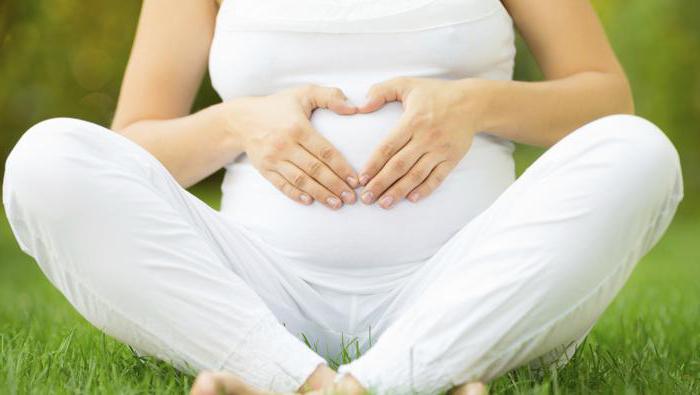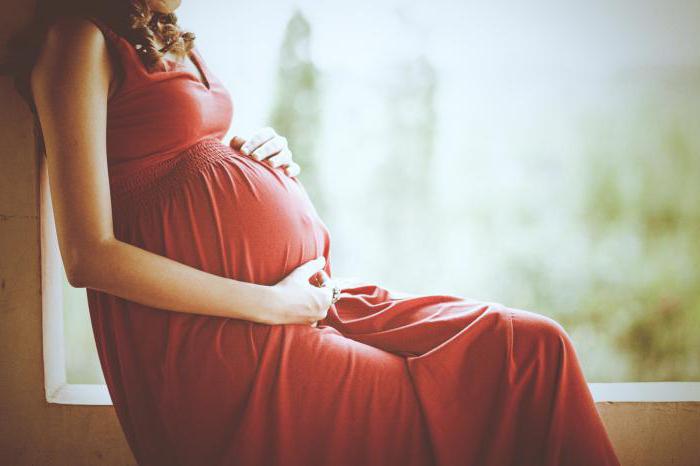Bearing and having a baby is a complex process for the female body. Often, it can be accompanied by complications. One of the possible negative consequences of giving birth to a baby is the formation of a placental polyp.

What it is?
After the conception of a child, the placenta begins to form in the body of the expectant mother. Her full education ends at the 14th week of pregnancy. With the help of this inner shell, the baby receives nutrition and the necessary substances. After the birth of the baby, the placenta leaves the body of the woman in childbirth. However, there are cases when the placenta is not completely rejected by the uterus and its small particles remain in the body. Over time, blood clots may linger on them. This new formation is also called the " placental polyp after Rodo 's."

Formation Cases
A placental polyp can form in three cases:
- In natural childbirth.
- Committing a caesarean section.
- Having an abortion.
In all three cases, the cause of the polyp is incomplete removal of the placenta.
The main causes
There are several reasons for the formation of the polyp:
- Poor abortion or cesarean section, after which the particles of the placenta were not completely removed by the doctor.
- Too strong adherence of the placenta to the uterus, which can cause incomplete discharge of the placenta after childbirth.
- Unusual formation of the placenta, which is characterized by the formation of an additional part. After birth, this lobule is very difficult to separate from the uterus.
- The development of the inflammatory process during pregnancy.
- Hormonal failure in the body.
Placental polyp after childbirth: symptoms and treatment
After the birth of a child, the female body is in a weakened state and all the attention of the mother is focused on the baby. This often leads to the fact that the woman does not pay attention to the problem on time. Diagnosis of this negative consequence of childbirth is a rather complicated process.
It is not possible to determine the presence of a polyp on its own, but some symptoms can be identified, in the presence of which you need to consult your doctor to exclude the likelihood of a problem.

The placental polyp after childbirth symptoms has the following :
- Bleeding. After the baby is born, a woman is bleeding for several days. Every day, the discharge becomes less intense and soon completely ends. You need to beware if the blood suddenly starts to stand out with a new force against a background of contracting secretions and such bleeding does not stop for a long time. This symptom may be accompanied by dizziness, nausea, pallor and loss of strength.
- Fever. If an infection gets into the uterus and inflammation starts, then the woman has a fever.
Gynecological examination
For an accurate diagnosis by a doctor, the following examination methods and methods can be used:
- Ultrasound examination
- Hysteroscopy.
- Dopplerographic examination.
Delete
If you have developed a placental polyp after childbirth , then you should not hope that the problem disappears by itself. You can’t try to stop the blood, and the neoplasm just does not resolve. Moreover, drug treatment in such situations also does not give a result.
Removal of the placental polyp after childbirth is performed surgically. Do not be afraid of the process itself, the operation is always performed with anesthesia or under general anesthesia. Currently, doctors are practicing several ways to remove neoplasms:
- Curettage is the most commonly used. It can be carried out either the old fashioned way, when only standard tools are used, or the use of a hysteroscope is possible. It allows you to avoid making incisions, and the doctor himself can observe the process on the monitor screen. The procedure is performed under complete anesthesia.
- Removal with a laser.
- The use of radio wave equipment.
- The placental polyp after birth can also be removed by exposure to electricity.
The last three types of neoplasm removal include cauterization of the base of the polyp. They are also characterized by common signs: painlessness, short duration of the operation (no more than an hour), lack of scars.

If you have been diagnosed with a " placental polyp" after giving birth , then you should not delay to see a doctor for the necessary treatment. If the neoplasm is not removed within a reasonable time, then it can lead to other unpleasant consequences.
Placental polyp after childbirth: treatment
After the surgery, the woman is still under the supervision of the attending physician for some time. During this period, such necessary procedures are carried out:
- The removed polyp is sent for histological examination. This is done in order to determine its characteristics (the presence of abnormalities or cancer cells).
- In the event of profuse blood loss, sometimes a woman needs a transfusion.
- The necessary tests are taken, including a general blood test.
- The disease itself is accompanied by a loss of blood, and, if necessary, the doctor may prescribe iron supplements to increase the level of hemoglobin.
- The administration of drugs that prevent the development of a bacterial infection is prescribed (antibiotics and hormonal drugs are in force).

A long period of full recovery and subsequent medical treatment, unfortunately, adversely affect the woman's ability to naturally feed her baby. Used drugs, getting into the body, enter the mother’s milk. For this reason, during the treatment, a woman will have to refuse breast-feeding, while preserving natural feeding is still possible. It is necessary during this period to constantly express milk, thus supporting lactation.
Possible consequences of the development of the disease
If you do not apply for the necessary treatment in time, the disease can have the following consequences:
- The inflammatory process in the uterus.
- Excessive blood loss can cause anemia.
- Changes in ovarian function are possible.
- The development of an infectious disease, including sepsis.
- Infertility, because the polyp can cause the non-attachment of the egg to the wall of the uterus.
How to avoid the occurrence of this disease?
In order not to encounter a similar problem, it is necessary to use preventive measures. Among them are the following:
- Timely registration of a pregnant woman and regular examination.
- Careful monitoring of the body and condition after childbirth and abortion.
- Timely request for medical assistance in case of detection of typical symptoms of the disease.
- Compliance with personal hygiene standards.

If, nevertheless, after the alarming symptoms are found, it is necessary to immediately contact your doctor in order to prevent the development of more serious consequences and diseases.
Output
Thus, polyps after childbirth are a fairly common occurrence, but by knowing the signs and symptoms of the disease, the development of negative consequences can be avoided.